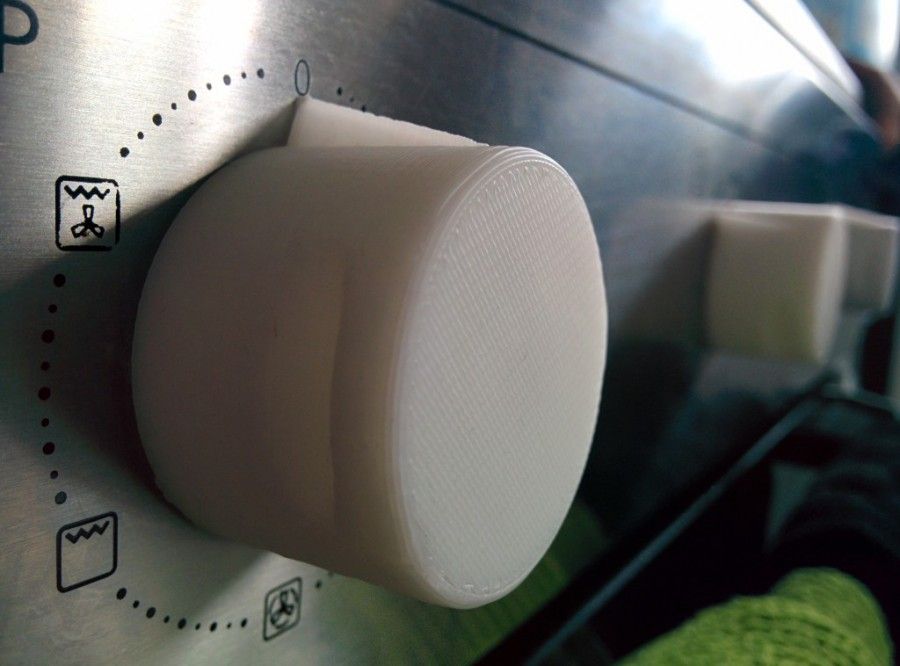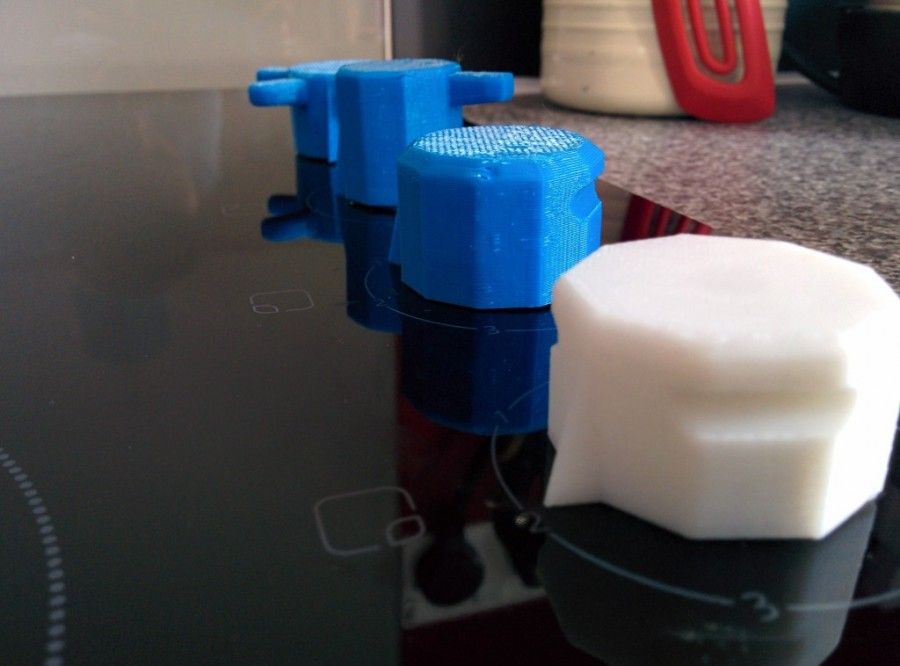It's a user generate-able knob to operate a stove-top hob, rather than a fully configurable biscuit — sorry!
When you move into new rented accommodation, there are all sorts of challenges that aren't obvious from the initial viewing. But one that I did know about from the offset was that my new cooker and hob were devoid of knobs to turn them on and off! “No worry,” I thought, “I'll just 3D print some at DoES Liverpool, surely there'll be some on Thingiverse that I can just print and fit.”
Cooker fittings seem to be an area where there aren't any engineering standards whatsoever so in the spirit of rapid prototyping, I printed a selection of 4 knobs to find out what things I didn't know that I didn't know about cooker knobs. As none of them fitted exactly and there wasn't one I could easily modify, I set about creating my own, and as I had 2 different fittings to design for, the easiest approach was to make it a all fully parametric model so one file could generate both the shapes I needed.

This design should fit any D-shaped shaft, so it could be used for any hob, stove, oven, grill, range, volume, potentiometer or rotary encoder knob.
If you want to make your own Hob Knobs, you can visit Thingiverse to customise your own, or download the latest hob_knob.scad file from Github and adjust the measurements according to your installation:
- the required height of the knob from the surface (
height), - the diameter (
shaft_diameter) and distance across from the flat of the D to the rounded side (D_width) of the shaft (printing clearance is added for a tight sliding fit(clearance)), - the outer diameter of the knob (
outer_diameter), - the inner clearance diameters of any seals that it needs to clear up and over, and set the wall thickness of the knob (
wall_thickness) so that \(outer\_diameter - \left( wall\_thickness \times 2 \right) \ge inner\_diameter\) - the visible height of the shaft (
shaft_length), - any plunge depth (
plunge_depth) if the knob centre should drop below the fascia. - the height required for the internal structure to clear any seals (
clearance_height)
You should also choose:
- the number of sides to the outside of the knob (
no_sides) — the default is a low-polygon style 9-sided design, but 250 sided will give you a very circular knob, - the size of any chamfer on the top (
top_chamfer)
If you want a pointer to show position on a dial (with_pointer)
- the size of the pointer (
point_size) - the number of degrees clockwise that the pointer should be away from the normal direction of the flat of the D (
point_angle)
Extra features:
- if you want extra features (
extra_feature) such as scolops around the edge, tap-like extentions or a cutaway view - the number of those features (
number_of_features) - the number of degrees offset anti-clockwise for those features to rotate them round into a good position (
offset_angle)

